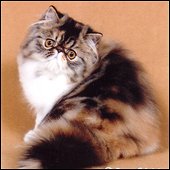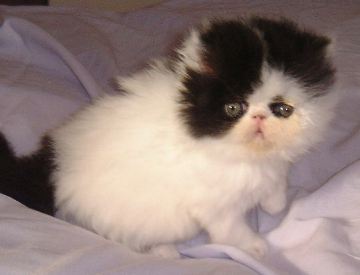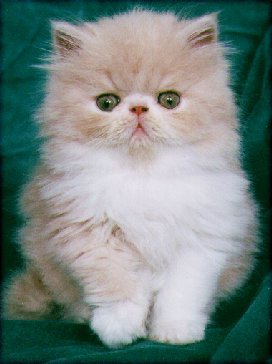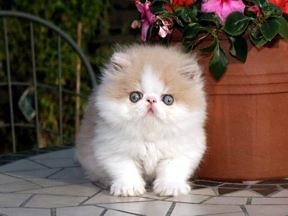My previous college had many cats..they helped me get through each day with a smile. I watched many being born, who became mothers, some died, got hurt. The college sent pest control after them one day. Still enrages and saddens me to this day, especially because they took newly born kittens and left the mother (they were her first kittens), and because they sent them to a place known to kill the inhabitants due to lack of space. 
You are using an out of date browser. It may not display this or other websites correctly.
You should upgrade or use an alternative browser.
You should upgrade or use an alternative browser.
Snowy's cats, kittens and other animals thread
- Thread starter Kittygyal
- Start date
- Replies 2K
- Views 257K
British Wholesales - Certified Wholesale Linen & Towels | Halal Food Gastronomy | PHP 8.4 patch for vBulletin 4.2.5
Tania
IB Expert
- Messages
- 2,555
- Reaction score
- 310
- Gender
- Female
- Religion
- Christianity
Re: Kitty & Tania's Animal Thread
Cats breed



The Persian's most celebrated feature is her full, plush, long fur. Thick, glossy, and full of life, it stands off from the body, giving the Persian the impression of roundness and size. It also comes in virtually every possible color and pattern.

Coat: long hair





Source
Source
Cats breed
Part VII Breed profile  ersian - Bicolor Division
ersian - Bicolor Division

Origin :

- The ancestors of the modern Persian were first introduced by Roman and Phoenician caravans from the province of Khorazan in Persia (now Iran) to Europe. Later caravans traveling from Persia and Turkey reintroduced the longhaired cats to Europe in the mid to late 1500s. These cats would later become the Angora and Persian breeds
- Over the years, American breeders have bred for a more extreme facial type, longer fur, shorter ears, and a boxy design. More than 100 years of selected breeding evolved the Persian into the breed we know today.

Appearance :
Body: The Persian's most celebrated feature is her full, plush, long fur. Thick, glossy, and full of life, it stands off from the body, giving the Persian the impression of roundness and size. It also comes in virtually every possible color and pattern.
- Under all that fur there's a cat, however. Solid, heavily boned, broad through the chest, low on the legs, the Persian is, in fact, built like a small furry brick house. The ideal Persian is a substantial cat with an overall impression of roundness, a body style known as cobby.
- There are two distinct facial types - the extreme and the traditional. In both types, the Persian has small, rounded ears set low on the head, wide, round eyes, full cheeks and a full well-developed chin. What sets the two types apart is the fact that the extreme has a more snub-nosed look. The face is very flat and the nose is short and snub with a “break” centered between the eyes. The nose is nearly as high as the eyes. - in extreme face.
- The traditional Persian's face is not as flattened. The nose is lower on the face and has only a slight break. The up-curving mouth helps give the sweet expression prized by Persian fanciers. Although the extreme is the type you'll see winning ribbons at shows, the traditional has many fans.

Coat: long hair

Coat patterns - for Bicolor Division:
- Calico & Bi-Color Division: consists of calicos, bi-colors, smoke and whites and tabby and whites.
- Calicos have white coats splashed with vivid patches of red and black, while the dilute calico is patched with blue and cream. The chocolate and lilac calicos have white coats splashed with vivid patches of chocolate and red or lilac and cream respectively. A van pattern is a white cat with color confined to the head and extremities. A maximum of two spots of color are allowed on the body.
- Bi-colors (black, blue, red, cream, chocolate or lilac with white) commonly exhibit white on the feet, legs, undersides, chest and muzzle. All established colors and patterns of tabbies with white and smokes with white are shown in this division. All have brilliant copper eyes except for the silver tabby with white which also may have green or hazel

Personality
Persians are known as the couch potatoes :giggling: of the cat world. They are perfect companions if you like trusting, gentle, sweet-tempered cats that would rather lounge by your side than sprint around the room. Don't count on using your Persian as a furry paperweight, however. They enjoy short periods of play between long periods of regal resting. - i like how it sounds:thumbs_up
Intelligence
Persians often have soothing influences on their human companions. 
Grooming
- Those exquisitely coiffed locks of show Persians are produced by long hours of grooming. If you neglect a Persian's grooming, you'll end up with a tangled, matted, miserable cat that needs to be professionally shaved to remove the tight, painful mats. Not only is a Persian's fur longer than any other breed's (up to 8 inches in length), they also have a long, full undercoat. The undercoat, made up of fine down and awn hairs, is almost as long as the outercoat, made up of stiff, protective guard hairs. This gives the Persian her plush look, but that baby-soft down hair mats easily.
- A 10- to 15-minute grooming session each day and a thorough one-hour grooming session once a week (thats lot of work to do
 )is recommended. Additional grooming may be necessary during the shedding months - spring when they shed their longer, heavier winter coats, and fall when they shed their summer coats.
)is recommended. Additional grooming may be necessary during the shedding months - spring when they shed their longer, heavier winter coats, and fall when they shed their summer coats.
- Bathing is also often needed to remove oil buildup. Some breeders recommend a bath every two weeks, although some Persians can go longer. Daily face washing is necessary if tear staining is a problem, which it often is.

Health
Reported health concerns include breathing difficulties, eye tearing, malocclusions, and birthing difficulties due to the head size and the foreshortened face. Polycystic kidney disease (PKD), a disease that can cause kidney failure, is also known to exist in some Persian lines. Ask the breeder if the cats have been screened for PKD before agreeing to buy.Source
Source
Last edited:
Tania
IB Expert
- Messages
- 2,555
- Reaction score
- 310
- Gender
- Female
- Religion
- Christianity
You could save Shiru and his friend () :? They are taken the kittens because the kittens can be re-homed much quickly than the adult cats. I am sure they didn't kill them....due to lack of space.
Kittygyal
IB GrandMaster
- Messages
- 10,595
- Reaction score
- 811
- Gender
- Female
- Religion
- Islam
Salamualikum.
wow alot of have been gone in here whilst i was not in this thread, alhamdulillah just seen some of the previous posts && there wonderful just wana hold them in my hands . Inshallah if anyone has any questions regarding on cats/kittys or any kinda animals please do ask inshallah && maybe my self && sis Tania can answer them inshallah
. Inshallah if anyone has any questions regarding on cats/kittys or any kinda animals please do ask inshallah && maybe my self && sis Tania can answer them inshallah  . I can't everytime come in this thread am very sowiee please do forgive me exspecially sis Tania i come on the NET using my cell so please do forgive me. i Do miss this thread but i can't do anything
. I can't everytime come in this thread am very sowiee please do forgive me exspecially sis Tania i come on the NET using my cell so please do forgive me. i Do miss this thread but i can't do anything  i will try my best to come here more often but am sowiee if i can't am really sowiee && sis Tania am sowiee for not downlaoding my cats/kittys pics inshallah give me more time sis plz
i will try my best to come here more often but am sowiee if i can't am really sowiee && sis Tania am sowiee for not downlaoding my cats/kittys pics inshallah give me more time sis plz
Ma'assalama
wow alot of have been gone in here whilst i was not in this thread, alhamdulillah just seen some of the previous posts && there wonderful just wana hold them in my hands
Ma'assalama
erm..i do doubt they could have helped kittens that were just a few weeks old, especially with the mother gone.i hope so though.the mother was quite hysterical after the incident, and we all pampered her so much more after that happened. thanks for the reassuranceYou could save Shiru and his friend () :? They are taken the kittens because the kittens can be re-homed much quickly than the adult cats. I am sure they didn't kill them.
Tania
IB Expert
- Messages
- 2,555
- Reaction score
- 310
- Gender
- Female
- Religion
- Christianity
Re: Kitty & Tania's Animal Thread
Cats breed



Coat: long hair


Wegies are active and playful and retain their fun-loving spirit well into adulthood. Natural athletes, Wegies love to investigate counters, the tops of bookcases, and the loftiest peaks of their cat trees. They make very good indoor-only pets as long as they are provided with enough room, climbing equipment, and lots of love and attention.

 at least the cat is thinking at owners health too
at least the cat is thinking at owners health too


Source
Source
Cats breed
Part VIII Breed profile :Norwegian Forest- Bicolor Division
Origin :
- Despite its large size and feral appearance, the Wegie is not a descendant or a hybrid of any wild cat species. Called the Norsk Skogkatt (Norwegian forest cat) in Norway, Wegies probably arrived in northern Europe hundreds of years ago, descendants of domestic cats introduced to Europe by the Romans. Mentions of large, longhaired cats exist in Norse mythology. Since the Norse myths were passed down by oral tradition for hundreds of years before being recorded in the Edda Poems sometime between 800 A.D. and 1100 A.D., it's clear that longhaired domestic cats have existed in Norway for a very long time.
- The climate of Northern Norway proved a harsh test for these cats. Only the largest and most hardy survived, and over the centuries the cats developed long, water resistant coats, hardy constitutions, quick wits and well-honed instincts.
Appearance :
Body: - Although the Wegie does bear some resemblance to the Maine coon, they are separate breeds. Maine coons are larger than Norwegians (adult male MCs weigh 13 to 20 pounds while adult male Wegies weigh 10 to 16 pounds), and the breeds' body and head types are distinctly different.
The Wegie is a powerful cat with long, strong back legs and a solidly muscled, well-balanced, moderately long body with a broad chest and substantial bone structure. The head shape resembles an equilateral triangle. The large, expressive eyes positively glow with intelligence and personality; the Wegie's sweet expression is particularly prized by Wegie lovers. Medium large, rounded ears follow the line of the triangle from chin tip to base of ear.
- The feature that really sets the Wegie apart from other breeds, however, is its magnificent fur. The heavy, double coat and regal mane make the Wegie appear larger than it actually is. The coat's naturally oily, water-resistant guard hairs protect the insulating downy undercoat. Lavish furnishings and tufts decorate the ears, and heavily tufted paws protect the feet from ice and snow. Wegies are slow to develop, reaching full size and weight at about five years.
Coat: long hair
Coat patterns - for Bicolor Division:
- CALICO: white with unbrindled patches of black and red.
- DILUTE CALICO: white with unbrindled patches of blue and cream.
- BI-COLOR: black and white, blue and white, red and white, or cream and white.
- VAN CALICO: white cat with unbrindled patches of black and red confined to the extremities; head, tail, and legs. One or two small colored patches on body allowable.
- VAN DILUTE CALICO: white cat with unbrindled patches of blue and cream confined to the extremities; head, tail, and legs. One or two small colored patches on body allowable.

Personality
Don't be fooled by the breed's impressive muscles and rugged exterior. Despite their wild years in Norwegian forests - or perhaps because of it - Wegies would rather cuddle than carouse. Sweet, friendly and family-oriented, they form close bonds of affection with their human companions. Nothing fazes them much, either. Wegies are active and playful and retain their fun-loving spirit well into adulthood. Natural athletes, Wegies love to investigate counters, the tops of bookcases, and the loftiest peaks of their cat trees. They make very good indoor-only pets as long as they are provided with enough room, climbing equipment, and lots of love and attention.

Intelligence
They take new people and situations in stride and adapt to most situations with philosophical ease. Not vocal cats, Wegies prefer to get their thoughts across through body language. They will speak up only if something is terribly wrong, like an empty food bowl. They do, however, have loud rumbling purrs you can hear across the room. They are not lap cats, preferring to perch beside their favorite humans rather than on them. Since the average Wegie is a hefty cat, this is not such a bad thing.
Grooming
The coat length varies depending upon the season. In spring, the Wegie sheds its longer, heavier winter coat, and in fall the cat sheds its lighter, shorter summer coat. This molt is so apparent that a summer Wegie almost looks like a completely different cat, with only the tail plume and ear and toe tufts to remind you of the winter Wegie. During the molts, thorough and daily combing with a good quality steel comb is necessary to prevent matting and limit the amount of cat hair covering everything you own. During the rest of the year, however, the Wegie requires minimal grooming. A once a week combing is usually enough to prevent mats.
Health
unknownSource
Source
Last edited:
Kittygyal
IB GrandMaster
- Messages
- 10,595
- Reaction score
- 811
- Gender
- Female
- Religion
- Islam
Greetings sis Tania 
woow them are very nice cats aww, i really like cats/kittys personalities very easy to find out whats there personalities. Health is very important for actually for EVERY animal.
Take care
woow them are very nice cats aww, i really like cats/kittys personalities very easy to find out whats there personalities. Health is very important for actually for EVERY animal.
Take care
Rabiyal
Elite Member
- Messages
- 396
- Reaction score
- 11
- Gender
- Female
- Religion
- Islam
:salamext:
Dealing in birds
Question:
My younger brother deals in birds – is this permissible or not?
Answer:
Praise be to Allaah.
It is permissible to sell birds because that comes under the general heading of the permissible nature of buying and selling.
From Fataawaa al-Lajnah al-Daa’imah, 13/34
http://www.islam-qa.com/index.php?ref=22443&ln=eng&txt=
I'm not sure about fish sorry.
JazakAllah khair really appreciate it
Tania
IB Expert
- Messages
- 2,555
- Reaction score
- 310
- Gender
- Female
- Religion
- Christianity
Tania
IB Expert
- Messages
- 2,555
- Reaction score
- 310
- Gender
- Female
- Religion
- Christianity
Contest notification
The persian breed is classified in divisions after the coat colour. Based on this the norwegian forest cat is presented with the same colour as the persians to make the comparison easier. :-[ (The norwegian forest cat is not classified in divisions)Bicolor division
Brown tabby and whitePersian:



Norwegian forest cat:




Last edited:
Nσσя'υℓ Jαииαн
Tu kaun hai paiiii?
- Messages
- 7,218
- Reaction score
- 920
- Gender
- Female
- Religion
- Islam
Norwegian forest cat looks cute...
Ibn Abi Ahmed
IB Legend
- Messages
- 7,915
- Reaction score
- 2,839
- Gender
- Male
- Religion
- Islam

Poll Updated. Poll will remain open between 11th Feb - 15th Feb 07.
- Messages
- 7,146
- Reaction score
- 843
- Gender
- Female
- Religion
- Islam
I Chose Da First One..lol...Looks So Innocent...
and sad...and depressed...
and sorta ugly...i didnt say that :X

Similar Threads
Add to Homescreen
How to install the app on iOS
Follow along with the video below to see how to install our site as a web app on your home screen.
Note: This feature may not be available in some browsers.




